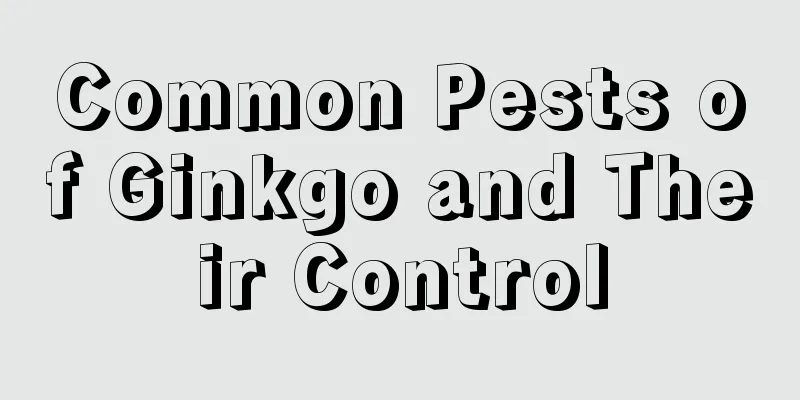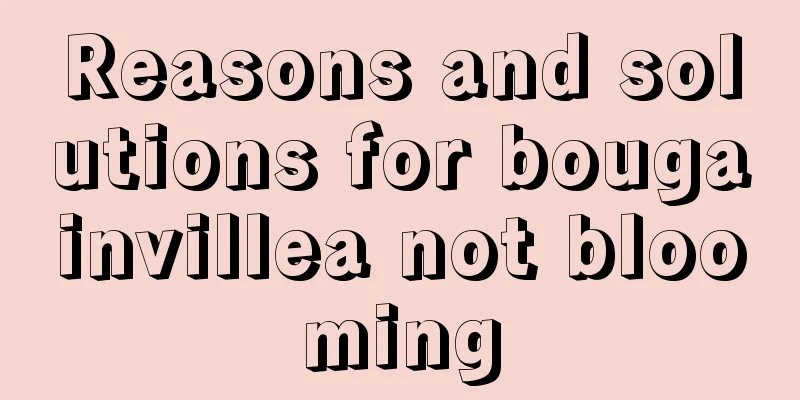Common Pests of Ginkgo and Their Control

Common pests of ginkgo: Ginkgo mothharmIn severe cases of insect infestation, all the leaves will be eaten, resulting in a bare crown, which will affect the yield and is not conducive to flowering and fruiting in the second year. Prevention and treatment methods① Generally in mid-to-late July, mature larvae are killed manually, and the cocoons are collected and burned. The egg masses can be removed manually in winter. ② Generally in September, before the female moth lays eggs, you can use black light to lure and kill adult moths. ③For larvae, you can spray with 500 times diluted 25% insecticide. Common pests of ginkgo: Ginkgo leaf rollerharmGenerally, the larvae bore into short branches and growing branches, causing all the leaves and fruits on the short branches to die and fall off, and the long branches to wither and break. Prevention and treatment methods①In April, adult insects can be caught manually in the early morning. ② Manually prune off the damaged branches and burn them in a centralized manner to kill the larvae and reduce damage. ③ Strengthen management and improve tree resistance. ④ During the damage period, spray 800 times of 80% DDT and 1000 times of 40% omethoate mixture. Common pests of ginkgo: termitesharmTermites are pests of the trunk. They will eat the wood of the trunk, making it impossible for Ginkgo to get a normal water supply. Prevention and treatment methodsFirst, you need to determine the location of the ant nest, which can be determined based on the termites' excrement, ventilation holes, etc. Then drill a hole and inject about 10 ml of insecticide plus 10% ant killer. Generally, the entire colony of termites will die 3-7 days after application of the pesticide. Common pests of ginkgo: tea yellow thripsharmIt usually occurs between June and August. Adult insects often gather on the back of leaves to suck the sap of young leaves, causing the leaves to lose their green color and turn grayish white. In severe cases, the leaves dry up and fall off. Prevention and treatment methodsYou can spray 50% cypermethrin, or use 3000 times diluted cypermethrin, or 1000 times diluted 40% oxydemeton-methyl emulsifiable concentrate for spraying. The first spraying is usually carried out in mid-June, and the second in mid-to-late July. If the pest is not serious, spray twice. |
<<: Pests of Prunus mume and their control
>>: Common diseases and pests of Forsythia suspensa
Recommend
Cultivation methods and precautions of succulent Tangyin (Care methods of Tangyin plants)
As a succulent plant, Tangyin is different from m...
Pests and diseases in the city that never sleeps and their control
Root rot in the city that never sleeps Root rot M...
A great way to turn one succulent plant into two by cutting off its head
Beheading process Tools: Scissors, small flower p...
Can roses be grown indoors?
Can roses be grown indoors? Roses can be planted ...
50 common foliage plants illustrations, the most comprehensive in history
ivy Pothos Chlorophytum Wedding Chlorophytum Prun...
How to propagate Brazilian wood and what to pay attention to
Brazil wood reproduction method There are three m...
What flowers are suitable for growing in Panjin? What are the city flowers and trees?
1. Climate characteristics of Panjin Panjin has a...
Diseases and Pests of Cymbidium and Their Control
Main diseases: fungal anthracnose, bacterial dise...
Cultivation methods and precautions of purple moon
Purple Moon Plant, also known as Purple String Mo...
Causes and treatments of yellow leaves of dragon beard orchid
1. Proper watering 1. Reason: If you water the dr...
Can I plant camphor trees at home?
Can I grow camphor trees at home? You can plant c...
Cutting method of double petunia
1. Time If grown indoors, it can be done all year...
Blueberry substrate cultivation formula
Blueberry is a plant of the genus Vaccinium in th...
How to fertilize Cycas revoluta
Fertilization method of cycad From March to Septe...
How to plant perilla seeds and when to plant perilla leaf seeds
Perilla seeds are usually sown around March , and...









